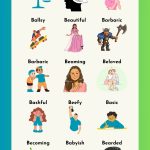
81 Ways to Make your ESL Speaking Class Awesome
Make your ESL Speaking Class Awesome
I’m sure you want your ESL speaking classes to be as awesome as possible. Everybody does! Here are my top 81 tips to help you do that. Ready for great classes in the future? Because that’s what you’re going to get if you follow these English teaching tips!
Ready? Keep on reading for the ESL speaking class awesome.
1. What’s your Target Language?
The first way to make your ESL speaking class awesome is to be clear about the aims of your lesson. “Practicing speaking” isn’t enough. Something more specific like, “Introduce and practice 5 feeling words,” or “Practice using the simple past in conversation” is much better.
2. Change Speaking Partners Often
It’s boring to talk to the same person all the time, in real life, or in an ESL speaking class! Avoid it as much as possible by switching it up.
3. Set the Context
Students need to learn new vocabulary or grammar in context, so give them a real-life situation where they could actually use it. It’ll make your lesson way more memorable. This way, your students will go out into the world and be ready to use English.
ESL Activities and Games
4. Start Class off on the Right Foot
This is something I seriously struggle with. How to get the students’ attention in a fun, interesting way. It’s most certainly not by diving straight into the lesson.
5. Teach Students How to Ask Questions
Take some of the pressure off yourself to always be carrying the conversation. Check out this video: Teaching Students to Ask Questions.
6. Pause Often
Give students ample thinking time. It might take them a while to process and produce something in a language that’s not their own. Your students will get frustrated if you often jump in and tell them the answer before they’ve had a chance to come up with it on their own.
7. Do Task-Based Learning Projects
Task-based learning projects can add a bit of variety to your ESL speaking class. Plus, they give students a chance to explore topics that they’re interested in, just in English.
More details about task-based learning are in this article.
- Amazon Kindle Edition
- Bolen, Jackie (Author)
- English (Publication Language)
- 301 Pages - 12/21/2022 (Publication Date)
8. Follow me on TikTok
9.Go Student-Centered Style
It’s better for you and also for the students. Everyone wins! Think about it-who should be doing the hard work in your class, you or your students? If you want your students to improve their English in your ESL speaking class, it should be them of course.
Check out: Making your ESL Classes Student Centered on YouTube.
10. Big Picture First
Give students the big overview before you get into the finer points. I usually write up a quick plan with 4-5 points on the side of the board at the start of class. My students can follow along and it also keeps me on track!
Love These ESL Activities?
Then you’ll need to check out the book, 101 ESL Activities for Teenagers and Adults. You can get it on Amazon:
11. Play the Odd One Out Warm-Up Game
It’s perfect for introducing just about any topic and is one of my favourite ESL warm-ups.
12. Use Role-Plays in your ESL Speaking Class
Role-plays are fun, student-centred and can help build some confidence in your students. They are perfect for lower-level ESL/EFL students who want to have a conversation but don’t have the skills to free-talk. I talk about using role-plays in this short video.
13. Get ESL Speaking Activities for Kids
ESL Speaking Activities for Kids will help make your classes awesome, guaranteed. Fun, engaging and interested ESL activities and games that your students will love. Help them learn English, the fun way and also save time when planning your lessons. Only solid, useful activities.
- Amazon Kindle Edition
- Smith, Jennifer Booker (Author)
- English (Publication Language)
- 134 Pages - 03/31/2016 (Publication Date)
14.Review Vocabulary
Reviewing vocabulary will help out your students a lot because you need to hear a word many, many times before you can actively recall and use it. It’s a worthwhile use of class time to spend a few minutes doing this every day.
Here’s one of my favourite vocab review games.
15. Play a Warm-Up Game
It’s perfect for higher-level students who can speak English. Or, you can adapt it to use with lower-level students by reducing the amount of time they have to talk. This warm-up activity can also be expanded by requiring group members to actively listen and ask follow-up questions.
16. Have a Routine
Perfect for children and useful for adults too! More details about having a routine in this post.
17. Be Fair
Of course, you’ll need to treat all students in the same way!
18. Be Patient
I once had a Korean teacher who would only give me about 1/4 second before just answering the question herself. It was so frustrating! Silence is okay. Be patient and wait for students to answer. They’ll really appreciate it. Trust me-nobody is feeling awkward about a little silence in your class except perhaps you.
19. Give some Feedback
Your students will love it that you’re actually helping them get better at English speaking. Whenever I’ve done surveys, many of my students have listed this as their #1 expectation of my ESL speaking class. Tell your students what they’re doing wrong, but in a kind way of course.
20. Use the Textbook
You don’t always need to reinvent the wheel. There’s likely lots of good stuff in the book that you can use in class. Here are some of my favourite ESL textbook recommendations:
4-Skills ESL Textbooks for Adults
4-Skills ESL Textbooks for Kids
21. Play some Board Games
Board games are one of my favourite things to do in an ESL speaking class. They’re guaranteed to get your students engaged, active and having fun in English class. I talk about board games for ESL students in this short video.
22. Use Google Drive
It’ll make your life way easier if you can recycle things from year to year. Something like an “introduction survey” activity can be used again, and again, and again. Same with board games. I just quickly adapt the old one I have, instead of spending the time to make a new one.
The other way using Google Drive can really help you is if you teach the same classes from year to year. For example, Touchstone Level 1. Maybe I’m given that textbook to teach from this semester. However, I vaguely remember teaching it years ago. I check Google Drive and…there it is! A whole set of lesson plans for that textbook. I check them out, adapt them and make them better. It saves a whole ton of time.
23. Show and Tell
It’s not just for kids! Everyone can do it, even adults. It’s a fun way to get your students to be active in your ESL speaking class. Find out more about it here: Show and Tell ESL.
24. Practice Small Talk with Your Students
Small talk is an important but often overlooked skill. It’s hard to practice in a classroom in a way that isn’t totally artificial. But, it’s possible. Here are my favourite ESL Small Talk Activities.
25. Check out these Tips for Teaching ESL Speaking
26. Review Often
It’s better that students know a few things well than a million things not really at all. Review lots and help them out. My goal in an ESL speaking class is to give my students a few things to take away from the class that they’re 100% solid in.
For beginners, perhaps knowing the difference between the simple past and the past participle. Or, for more advanced students, it could be knowing when to use the various future verb tenses.
27. Be Serious Sometimes
Your ESL speaking classes don’t always need to be fun. Learning English is difficult! It’s okay to have some serious times where you focus on a difficult grammar concept. It’s okay for your students to do a bit of work with a pen and paper where they dive into the grammar and really figure it out.
Resist the temptation to be an edutainer. One example of being all business is using a lesson plan like this one:
Social Issues ESL Conversation Lesson.
28. Play Never Have I Ever
It’s not just a drinking game-it’s an excellent icebreaker or warm-up activity for your ESL speaking classes too.
29. Join this Facebook Group
Resources for English Teachers.
There is lots of excellent stuff posted there every single day that you can use in your ESL speaking classes.
30. Use Graded Language
Remember to adapt your language in terms of how fast you speak, the vocabulary you use as well as how difficult your grammar is so that the students will be able to understand you.
More details about using graded language in your ESL speaking class here: Graded Language-Use it!
31. Incorporate Public Speaking into your Classes
Public speaking is a useful life skill for everyone, including our ESL/EFL students. Plus, they’re fun and a nice way to get the teacher out from in front of the class all the time.
Check out: How to Teach Public Speaking and Presentations.
32. Make Instructions Clear
Use ICQs (instruction checking questions). For example, after you give your spiel about how to do an activity, you could ask some of these ICQs:
“How many people do you need in your group?”
“If you roll a “3,” what does that mean?”
“When is the game finished?”
“Should you give a 1-word answer?”
33. Start with an Awesome Lesson Plan
Here’s everything your need to know about making lesson plans for your ESL speaking class here:
ESL Lesson Plans and How to Make Them
34. Focus on Communication
If students can get their message across and be understood, they’ve accomplished something. You don’t necessarily have to worry about every single grammatical error. This is especially true if it’s not something that you’re focusing on in that class.
For example, perhaps you’re talking about using the simple past to tell a story. If a student is telling their story and using simple past verbs correctly and you can understand the gist of the story, that is probably enough. If they are using some incorrect vocabulary, don’t worry about it. That is the focus of another lesson.
35. Get this Book
- Amazon Kindle Edition
- Bolen, Jackie (Author)
- English (Publication Language)
- 51 Pages - 07/29/2015 (Publication Date)
39 ESL Warm-Ups: For Teenagers and Adults is the book that will help you get your ESL speaking class started off in style.
It’s really tough for your students if you jump straight into the nitty-gritty details of your lesson. They’ve just come from other classes, from home or work, or from hanging out with their friends. It’s most likely they haven’t been focused on speaking class. Help your students ease into English by using one of these warm-up activities or games.
36. Use CCQ’s
CCQ’s are concept-checking questions. For example, if you are teaching about the simple past, you could ask these CCQs:
“What is the past tense of eat?” Is it a regular, or irregular verb?”
“I gone bungee jumping last weekend. Correct or incorrect? Why?”
37. Try out this TEFL Warmer Activity for Kids
38. Engage Apathetic Students
Do you have classes filled with mostly apathetic students (freshman English classes in South Korean universities?). Don’t worry, many people do. Just let it go!
39. Follow me on Twitter
You’ll find lots of useful tips for your ESL speaking class.
40. Focus on Fluency as well as Accuracy
Have some activities where the goal is to simply speak quickly and not worry too much about making mistakes.
Check out the warm-up game in #15 for one way to do this. Or, here is an activity to help your students work on writing fluently.
41. Correct Errors as a Class
Instead of singling someone out, you can say at the end of an activity, “I heard someone say XYZ, but it should have been ABC.” It’s likely that many students made the same mistake.
42. Use this Fun Warm-Up Activity
43. Use a Great Textbook!
Check out my recommendations for the best ESL textbooks that focus on all four skills (listening, speaking, reading, writing):
ESL textbook reviews (children). ESL textbook reviews (adults).
44. Praise Liberally
Students respond well to positive reinforcement. For example, it’s far better to encourage the students who actually are speaking English in your class instead of scolding the ones who are not. Even adults like to be praised.
45. Follow this Board on Pinterest
You’ll find lots of useful teaching tips and ESL games and activities.
46. Use a Discussion Starter
Here are my top 10 list of discussion starters for children, and Top 10 Discussion Starters for Adults.
These discussion starters will help you get your ESL speaking class started off in style.
47. Make a Lesson Plan
Use this ESL lesson planning template.
It should go without saying that having at least a general lesson plan is better than just “winging it.” Trust me, I’ve seen way too many teachers over the years trying to do it on the fly and the results are usually terrible.
48. Have Students do a Presentation
Fun for you, useful for the students. Check out these Presentation Project Ideas.
49. Use Surveys
They are one of the best ways to get your students up out of their seats and talking to their classmates. ESL surveys are also student-centred, focus on all four skills, and are perfect for those low-energy, sleep classes.
50.Play Charades
It’s a classic one for a reason! Charades are a fun party class game and an excellent way to review vocabulary, in a sneaky kind of way.
51. Remind Students of Who/What/When/Why/Where/How
These words are really useful in a conversation! Go over this when you’re doing a conversation activity and require students to ask at least one or two follow-up questions to their partner.
52. Get this Book
39 No-Prep/Low-Prep ESL Speaking Activities: For Teenagers and Adults
53. Use Flashcards
For kids, flashcards are pure gold in terms of what you can do with them. Check out that previous link for lots of ideas about how I use flashcards in my ESL speaking class for kids.
54. Practice Pronunciation
Use these fun pronunciation games!
It never hurts to focus a little bit on pronunciation in your ESL speaking class. Students always appreciate it and find it quite fun.
55. Incorporate Listening and Reading into your ESL Speaking Class
It’s all tied together and you can’t really become fluent in speaking without a grounding in the other stuff. It’s usually best, even if you’re teaching “speaking” to mix in a bit of listening, reading and writing.
56. Give Students Thinking Time
It’ll make that discussion time even better. For example, if my students are learning about telling a story in the past, I’ll introduce the verbs they might want to use. Then, I’ll give my students 2-3 minutes to think about their story before they have to tell it to a partner. If it’s a speaking class, I’ll usually make a rule that they can only write down a few words on their paper as notes, but they can’t write full sentences.
By giving students a couple of minutes to think about their story, they’re able to produce far better ones.
57. Rock-Scissor-Paper Game
Kids love it and you can also turn it into a fun ESL Speaking Activity.
58. Help Students Get to Know Each Other
On the first day of class, if the students don’t know each other, be sure to use some icebreakers to help them do this!
59. Encourage Respect
When you’re talking, everyone is listening. Same with another student. Don’t allow students to talk over you, or another student.
60. Follow this board on Pinterest
ESL Speaking Games, Activities and Resources.
61.Encourage Students
It’s hard to speak in English! Praise even small efforts.
62. Subscribe to Jackie Bolen on YouTube
63. Have some Fun with Can/Can’t
64. Do the CELTA
Learn how to teach so you can feel more confident in the classroom. The CELTA is kind of the gold standard in the month-long courses, so don’t waste your time doing one of the imitations.
65.Read How to Teach Speaking
- New
- Mint Condition
- Dispatch same day for order received before 12 noon
- Guaranteed packaging
By Scott Thornbury, it’s a classic for those new to teaching ESL. It’s the book you’ll end up pulling off your bookshelf again and again. You can check it out on Amazon here
66. Use Toilet Paper in Your Class as a fun Icebreaker
67. Teach your Students about Relative Clauses
Here’s a fun game you can play to practice them.
68. Be Kind
Never make fun of students for the mistakes they make. This is obvious of course! Another factor is to make sure students don’t do this either.
69. Learn a Language Yourself
Remember what it’s like to be in the students’ shoes. It’s often frustrating, confusing and difficult to learn a language from someone who doesn’t speak the same first language as you.
70. Encourage Risk-Taking
You can’t learn a language without making plenty of mistakes. Encourage your students to take risks because it’s the only way that they can become fluent in a language.
71. Like ESL Speaking on Facebook
All kinds of ideas for your ESL speaking class here. It’s updated every couple of days with a new idea.
72. Have a Friendly Debate!
I love to talk about interesting things with my friends and family members. Our students are the same, which is why I like to have some debates in my classes. Have a look here for some ideas:
73. Follow this Board on Pinterest
74. Learn How to Plan an ESL Listening Lesson
75. Smaller Groups and Pairs are Best
Maximize student talking time by generally avoiding discussions with the entire class. My general rule is that if the class has more than about five students, I’ll put them in pairs or groups of three for discussion times.
Then, at the end of the talking time, I’ll do a quick sum-up of what happened in each group. For example, I’ll ask a few students to tell me something they learned about their partners. I try to make it random so it keeps students on their toes!
76. Sing a Song
Using a song in your ESL speaking class makes a really fun lesson! One of my favourites is “If I Had a Million Dollars.”
The previous link is a lesson plan that I developed to go along with this popular song by the Barenaked Ladies.
77. Teach Formal and Informal Speaking
Students will need to know both, depending on the circumstance so point this out, if relevant. For example, greetings. If your students are meeting someone older than themselves that they don’t know, they might say, “Hello, nice to meet you. I’m Jackie.”
But, if they’re greeting a good friend who is the same age, they might say, “Hey, what’s up? What’s going on?”
78. Use the “Do You Like to ____?” activity.
It’s a fun way for beginner students to get to know their classmates a little bit better.
79. Don’t Interrupt
If students are doing an activity with a small group or partner, just observe but don’t get involved in the conversation. If students are making common errors, I’ll note this on a piece of paper and then correct errors as a class at the end of the activity.
80. Draw a Picture
Drawing a picture is a classic ESL speaking activity
81. Learn How to Plan an ESL Reading Lesson
Bonus Tip!
If you want to improve your classes, consider taking a course to learn what you’re doing. You can bone up on grammar, teaching the 4-skills, classroom management, etc. Check out our recommended one here:
120-Hour Online TEFL Course from Let’s TEFL

Speaking classes for adults
Have your Say!
What’s your top tip for making your English speaking class awesome? Leave a comment below and let us know what you think.
Last update on 2024-04-25 / Affiliate links / Images from Amazon Product Advertising API









Leave a Reply